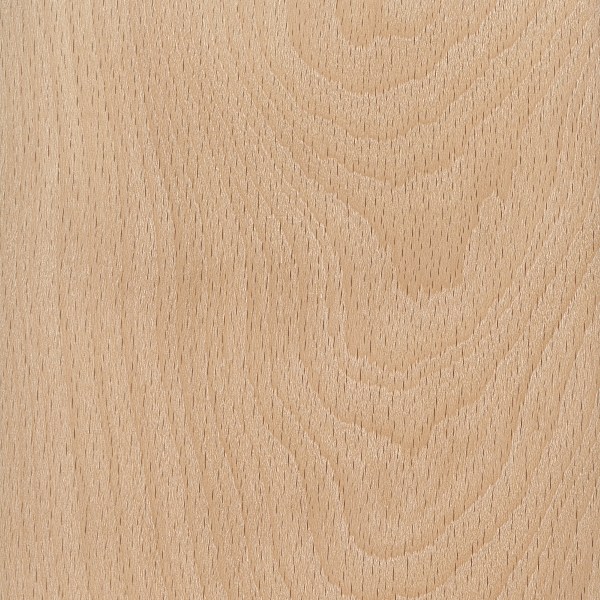American Beech
Color/Appearance: Beech is typically a pale cream color, sometimes with a pink or brown hue. Veneer tends to be slightly darker colored, as slicing the veneer usually requires the wood to be prepared with steam, which gives the wood a more golden tone. (See scan below.) Flatsawn surfaces tend to be very plain, while quartersawn surfaces exhibit a silvery fleck pattern.
Grain/Texture: Grain is straight, with a fine to medium uniform texture. Moderate natural luster.
Endgrain: Diffuse-porous; small pores gradually becoming less frequent from earlywood to latewood; solitary and in multiples and clusters; tyloses occasionally present; growth rings distinct due decreased latewood pore frequency; rays easily visible without lens, though size is inconsistent, noded; parenchyma usually not visible with lens.
Rot Resistance: Beech is considered non-durable or perishable; it is also susceptible to insect attack.
Workability: Overall good workability; it machines well, and glues, finishes, and turns well. Beech also responds superbly to steam-bending. It does, however, have a large amount of movement in service, so movement and wood stability must be taken into account.
Odor: No characteristic odor.
Sustainability: This wood species is not listed in the CITES Appendices or on the IUCN Red List of Threatened Species.
Common Uses: Lumber, veneer, flooring, crates/pallets, railroad ties, musical instruments, furniture, turned objects, and other small wooden objects.
Comments: American Beech is sometimes underrated and under-appreciated: which may be due to its somewhat bland appearance. Yet considering its decent strength and hardness—and its comparatively low cost—Beech represents an excellent value for woodworkers.



